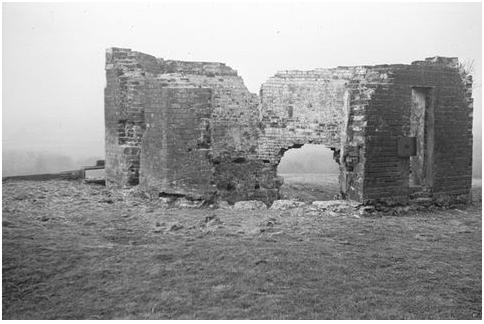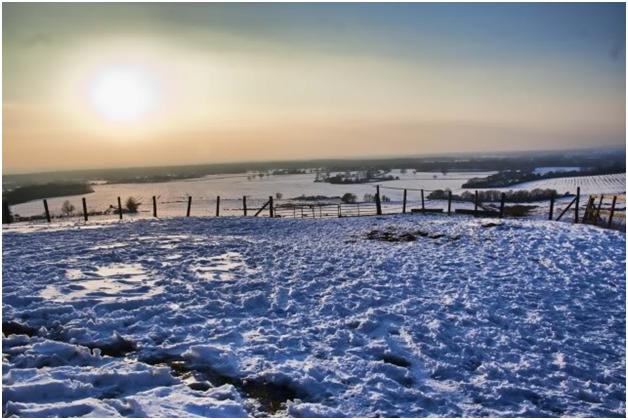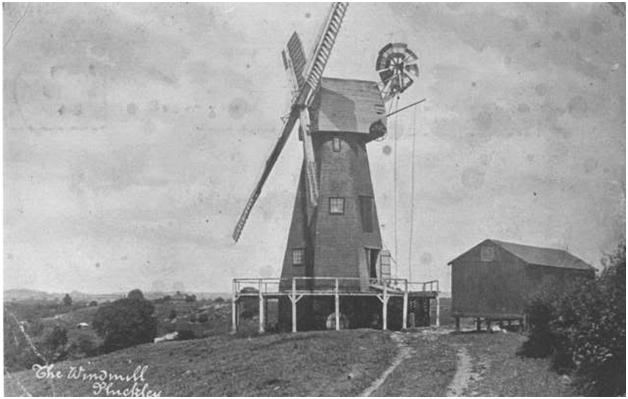Dicky is unfortunately unavailable for comment, due to
his death. He was born in June 1845, and married in 1873.
His son Charles, although recorded as a 25 year old ‘boarder’
in Folkestone in the 1901 census, was said to be helping his father
run the mill by 1914, when he was called to war. His father, now aged
69, was unable to run the mill in his absence and milling ceased in
1916. It appears he officially ceased being Miller in 1919, aged 74.
The mill itself was a tall lapped wood construction with louvered sails,
which was already in a dilapidated state by 1916, having lost two of
it’s sails in 1912, and fallen into a general state of disrepair.
It appears to have become ruinous by 1932, and was struck by lightening
in the April of 1939.
A photograph from 1940 reveals the whole structure to have burnt to
the ground, and the brick base to be well on it’s way to being
completely removed. No trace remains on the site now. See Below
cccccccccccccccccccccccccccccccccccccccccc
Stories of the haunting may have spread whilst the mill was in disuse,
and could possibly be related to a rumour that Dicky's son used to set
bird traps in there with long white sheets attached. Local historian
Jacky Grebby was able to verify this for us.
The stories would appear to have taken hold by 1955, when Frederick
Sanders dismissed them in his book Pluckley was my Playground, although
whether this was one of the stories created by Desmond Carrington earlier
in the decade in a TV Times article is unknown.
As for what is seen, we can quickly dismiss stories revolving around
the ruins of the mill, or indeed those that seem totally oblivious to
the fact there is no longer a mill in existence, such as the apparition
hanging from a beam.
We have no way of verifying these stories, and they do not suggest ‘before
the mill burnt down’ in their context.
So what could a ‘black silhouette’ be? Well the obvious
answer is shadows, however the site of the mill is in the open and away
from anything that could cause misleading shadows. Animals are unlikely
to be mistaken for a silhouette in the open as well. The fact that it
is said to precede a thunderstorm is interesting, but there are no known
atmospheric phenomena that could be mistaken for a black figure.
This area is far from the main road, however it is a convenient shortcut
through the village for those on foot, so the opportunity for sightings
is there.
The site today.
cccccccccccccccccccccccccccccccccccc
Mill House is very close indeed to the site of the mill, and it is much
closer than The Pinnocks, which is some distance away and not on a direct
route. Strange then that this is mentioned in relation to the mill rather
than Mill House, surely not something a local is likely to mistake?


